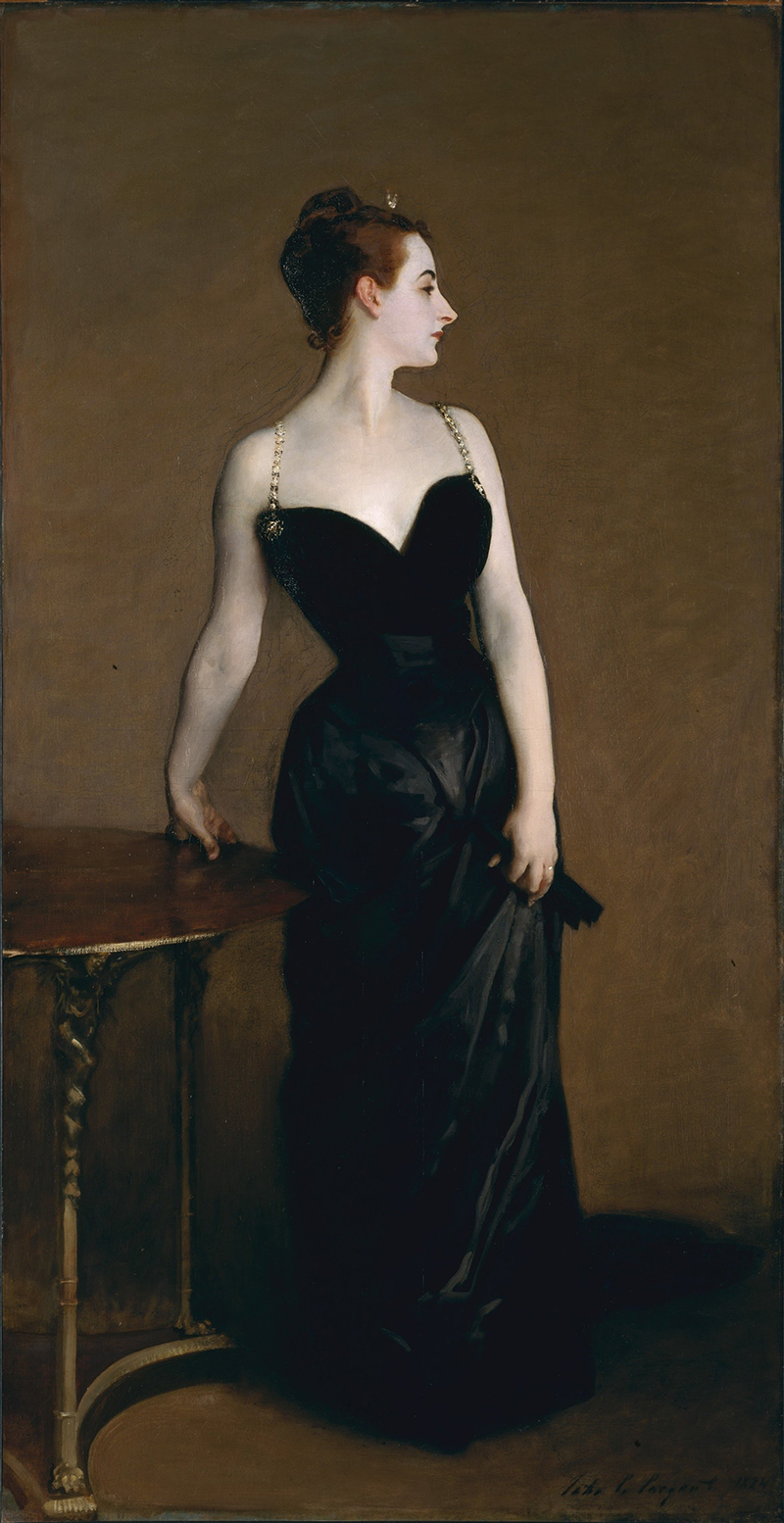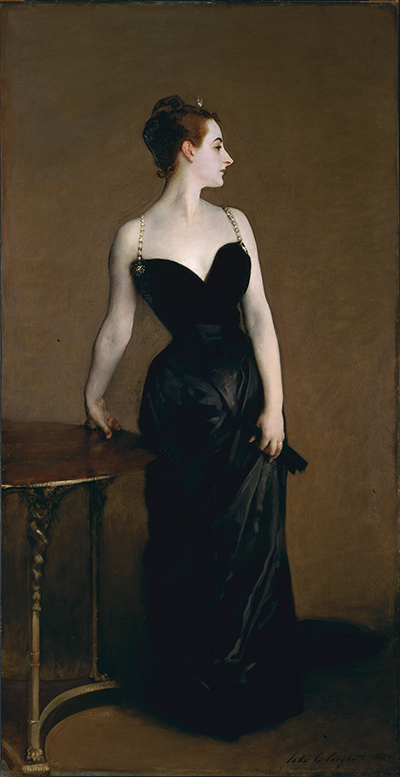John Singer Sargent regarded Madame X as one of his finest paintings
The painting is oil on canvas and measures 208.6cm x 109.9cm unframed. The portrait was painted by Sargent in 1883-1884 and was destined to become one of the artist's most iconic works.
The subject of Madame X is Madame Pierre Gautreau. Madame Gautreau was born Virginie Amelie Avegno in 1859 in Louisiana. The portrait was not commissioned by the sitter’s family. Sargent was enthralled by her unconventional beauty and solicited Madame Gautreau as a sitter.
Sargent spent about a year on the portrait, much interrupted by the restless and inattentive model. He had intended the painting to establish his career as a society portraitist.
The portrait of Madame X depicts Virginie Gautreau in a black dress with a considerable décolletage. She looks to her left with her right hand resting on a bare wooden table. Her left hand holds a fan and displays a wedding ring.
She wears her hair in a twist with a small diamond tiara. The full-length black gown is cinched tightly at the waist, has jeweled shoulder straps, and a deep, heart-shaped neckline. Her right shoulder strap was originally painted as provocatively slipping off her shoulder.
In this portrait, the viewer can identify elements of different schools of art, which makes Sargent difficult to slot into a specific style. He tended to adopt the elements that served his purposes for a given work. Although he operated within the conventions set by the classic tradition of portraiture, Sargent had a proclivity for introducing novel variations. There were also many study drawings for this painting.
Sargent began his painting career in the Parisian studio of the French portrait painter, Carolus-Duran. Carolus-Duran held a progressive school that dispensed with the formal academic style that was characterized by a methodical building up of a painting from underpainting and careful drawings.
Instead, the method taught at the atelier was the bold technique of applying a loaded brush directly to the canvas. This technique, referred to as alla prima, was developed by the Spanish portrait painter, Diego Velazquez. By not conducting the extensive underpainting, Sargent imbues Madame X with a more spontaneous air and the impression of a candid glimpse into the sitter’s life.
Typically, painters of society portraits use a tool kit of attributes to convey the social identity of the model. For example, ornate and expensive clothing indicate a high social standing whereas being surrounded by books indicates a life of the mind.

Madame X has minimal jewellery, a simple black satin dress, and a wooden table that sinks into the background. Sargent uses the sparseness of details and darkly hued-background to render Madame Gautreau in stark relief. Her elegant and elongated figure with blue-tinged white skin suggest that Madame X is not so much a personality as an archetype. This propensity for unusual composition can be seen in the turning of Madame X’s head to a profile while keeping the body facing forward.
The portrait of Madame X was first exhibited at the Paris Salon of 1884. Previously, Sargent had received some success with the critics of the famous Paris Salon's annual exhibition of paintings. Instead of the anticipated positive reviews, the painting caused a scandal.
The visitors at the Salon of 1884 ridiculed the painting and appeared to object to the amount of flesh that the painting chose to expose and the bluish tones of her skin that to them appeared corpselike.
Although the portrait was anonymously titled Madame X, Parisians immediately recognized the notorious socialite Virginie Gautreau. Adding to the scandal of the plunging neckline was the lady’s reputation in Paris, which is represented in the painting by the combination of the slipping shoulder strap and wedding ring.
Parisian society interpreted the position of the strap and the ring as signifying that the married lady would not be taken aback by the amorous attentions of men. Madame Gautreau's mother attempted without success to have the painting removed from the walls of the Paris Salon of 1884. Sargent kept the portrait for himself for thirty years and eventually sold the painting to the Metropolitan Museum of Art in New York.
Despite the scandal it caused, in some respects the portrait sits comfortably in it’s historical time frame. Madame X reflects the Gilded Age in the United States, which took place from 1870 to 1900 and could be described as a thin veneer of gold covering widespread social problems.
This historical period was a time of rapid economic expansion in Europe and United States that enriched a few and cast the rest into poverty. In portrait painting, the Gilded Age had a penchant for depicting wealth and status. The conventions of the Gilded Age gave Sargent the elements to manipulate in order to question the morality of the upper classes.
Previously, the Salon had been amenable to celebrating high society’s fashionable ladies. In 1866, the French impressionist Claude Monet had exhibited the Lady in a Green Dress to critical approval. Slightly later in 1869, Carolus-Duran presented Lady with a Glove at the Paris Salon.
As for the daring seductive tone of the Madame X, the exhibition was no stranger to nudes. Indeed, two decades earlier Edouard Manet presented Olympia at the Paris Salon, which shows a woman nude on a couch and brazenly engaging the gaze of the viewer.
A major difference between these two depictions of overt feminine sexuality is that Madame X occupies a high social status whereas Olympia occupies a much lower rung. What made Madame X shocking to the Parisian art world was the linking of high society with overt sexuality.
Despite the row caused by the portrait at the Paris Salon, Madame X boosted Sargent’s standing as an artist of the fashionable set. Beginning in the late 1880s, Sargent enjoyed a prosperous career in Britain and the United States.




